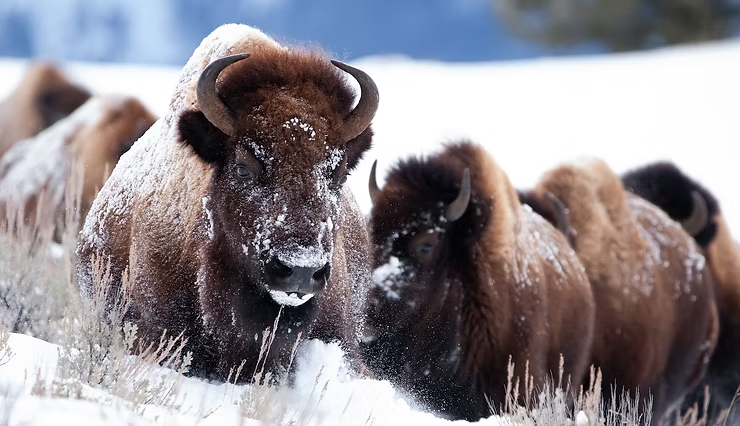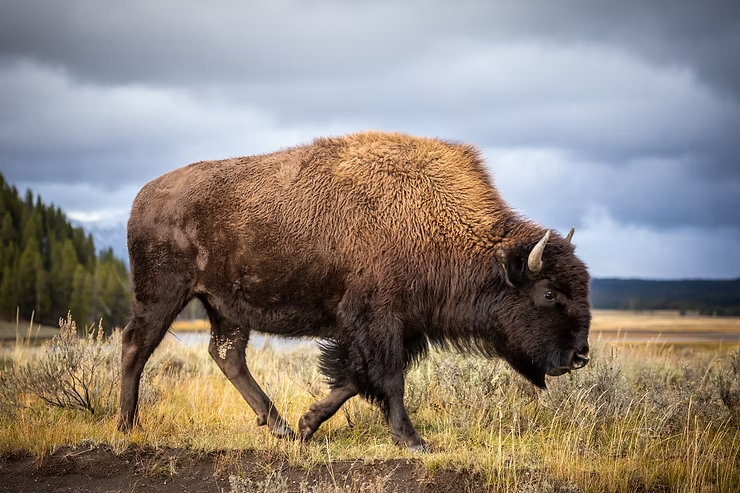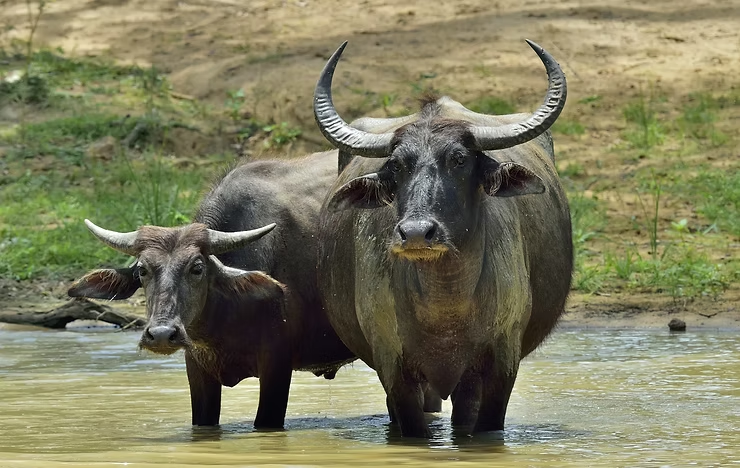How do bison survive a long, cold winter?
- Willy's Wilderness
- Jan 11, 2022
- 3 min read
Updated: Jul 24
What do you do to protect yourself from the winter cold? You bundle up! Coats, scarfs, hats and gloves all come out of storage.

Bison don’t have to shop for coats. As temperatures dip, they grow their own thick, woolly fur coats to protect them from freezing weather and harsh winds. Their fur is so bushy it acts as the perfect insulator. This means that bison can have a foot of snow on their backs, but none of it will melt. The heat from their skin never reaches the snow because of their coat of fur.
Plus their skin literally gets thicker in winter! Just like bears, bison bulk up with fat deposits that help insulate their bodies and keep them warm. All of this — thick fur, thick skin and lots of fat — helps them battle blizzards and other weather extremes in winter. These massive mammals can face off against the wind, hunker down and wait out storms that would kill other animals.
Even in winter, bison must eat. Where do they find their favorite grassy meals? They use their heads and massive shoulders like a plow, shoveling snow out of the way. Under blankets of snow — sometimes as deep as 4 feet! — is grass the bison will munch on all winter long.
Bison are energy minimizers to survive winter. They don’t run around exerting a lot of effort. Instead, they slow way down, starting with their metabolism. Metabolism is how bodies turn food into energy. By slowing down their metabolism, bison don’t have to spend as much time foraging for food and they don’t have to eat as much.
Words to know
Adaptation: A change by which an organism or species becomes better suited to its environment.
Herbivore: An animal that eats only plants.
Insulator: A substance that does not easily allow the movement of heat or sound.
Metabolism: The chemical processes in an organism that maintain life.
Winter grass is tougher than summer grass. There are more parts of the winter grass that bison can’t digest right away, so the winter grass sits in their guts longer. This gives the bison more time to get more nutrients out of their food before it is digested.
They also have this really cool adaptation where they can create heat inside their bodies from digesting their food. You know how your throat feels warm when you’re drinking hot cocoa? Think of it like that, except it starts from eating grass. That would be like you eating a banana and all of a sudden your insides feel warmer!
Bison are incredible animals that are built to thrive in all seasons. Read on to learn more fun facts about North America’s largest land animal.
Impressive stats

Bison are massive. They can weigh up to 2,000 pounds and get as tall as 6 feet at their shoulders. For all that size, they are quick on their feet. They can run 35 miles per hour to 40 miles per hour in a short sprint. Can you do that?
Bison are herbivores, spending most of their days grazing on grasses in large herds. In fact, they can eat more than 30 pounds in a day! But that doesn’t mean they can’t be dangerous. They are wild and unpredictable, especially because of their size and speed. They can be aggressive if they feel threatened. Always make sure to give them plenty of space.
Bison vs. buffalo

Technically, bison and buffalos are different animals. Bison bison, the scientific name for American bison, are native to Canada, the United States and northern Mexico. Buffalo live in Africa and Asia. Besides location, look for the gigantic hump on the bison’s back. Buffalo don’t have these humps.
Bison in Illinois?
Maybe you aren’t going to run into them while riding your bike, but these magnificent mammals used to roam all over Illinois. We think the last wild bison lived here around 1810.
Before that there were lots of bison in Illinois Country. Native peoples hunted them for food, blankets, clothing and more, while French explorers wrote about them in their journals. Bison were even called Illinois cattle! Today, you can still see them in Illinois in managed herds in places like Midewin National Tallgrass Prairie and Fermilab and on bison farms.


